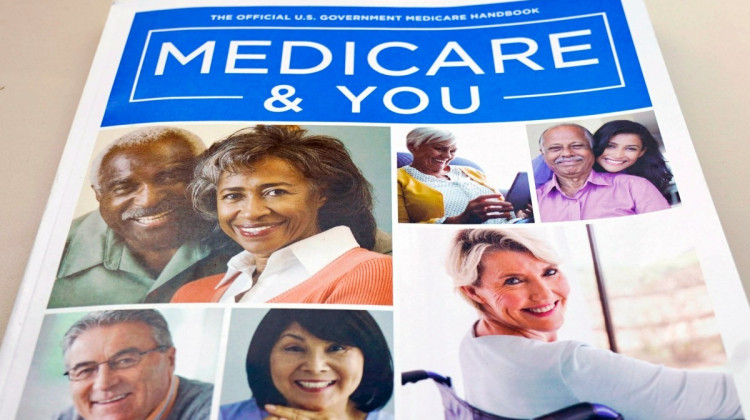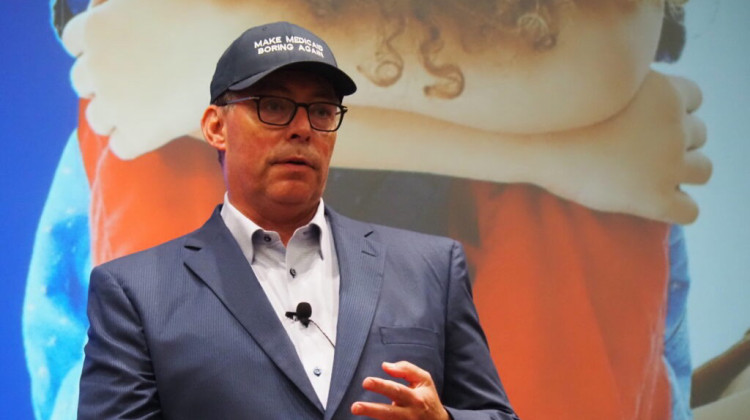Facing mounting financial pressures, insurance companies are changing the prescription drug coverage available to many consumers in Medicare Part D.
‘Tis the season — open enrollment season for health insurance, that is.
Last week, we examined the challenges facing consumers shopping for Affordable Care Act plans, and met a West Virginia man determined to help as many people enroll as possible, despite budget cuts and rate hikes.
This week, we turn to the market for Medicare prescription drug plans, also known as Medicare Part D. More than 50 million seniors, and others with certain disabilities, rely on this marketplace to find coverage for the medications they need.
But some troubling trends suggest that this essential part of Medicare is on shaky ground.
“It’s very concerning where this is going,” said 73-year-old Cindy Trish.
Trish had a Part D plan she liked, but found out a few weeks ago that the insurance company that runs it is axing that offering for 2026.
The number of drug plans available to those enrolled in the traditional Medicare program — people like Trish — has plummeted by 50% in just the last two years. For some people, the cost of this drug coverage is rising too. In reporting this story, we met one man whose premium is doubling. Other consumers’ out-of-pocket expenses are climbing.
Here’s what we learned from talking with researchers, seniors, advocates and industry experts about what’s driving these changes — and where this all might be headed next.
-
The good news: Part D offers more protection for patients’ wallets than ever. The Inflation Reduction Act capped the out-of-pocket drug costs for an individual at around $2,000 beginning this year. This helps the more than 1 million people whose out-of-pocket expenses would otherwise have exceeded $2,000. And it should offer peace of mind to millions of other folks who don’t take expensive medications now, but may need them down the road.
-
The bad news: That out-of-pocket cap is putting extra financial pressure on insurers, which are in turn raising consumers’ costs and narrowing their options. About 40% of drug plans in traditional Medicare are bumping up premiums. Insurers are hiking deductibles and pulling other levers too — from changing copays to redesigning formularies. Some companies are closing plans down, further muddying the choices for consumers. “Trying to navigate all those complexities is extremely challenging,” said Mark Newsom, who’s worked in both the federal government and the insurance industry. He added that even he can spend hours sorting through plans and still feel stumped.
- The sky is not falling, yet — but some experts worry that it could. Right now, the federal government is helping to stabilize this market by throwing extra cash at insurers and capping how fast drug plan premiums can rise, but those governmental policies are slated to end soon. If consumers’ costs continue to climb while their plan choices shrink, they could find the prospect of staying in traditional Medicare untenable. While many people could switch to a cheaper Medicare Advantage drug plan, that move comes with its own costs. The private insurance companies that run Medicare Advantage more closely manage people’s care and limit their choices of doctors and hospitals. The program also costs taxpayers an estimated $80 billion extra each year.
We hope you’ll give our full story a read or a listen. You’ll hear some surprising twists in Cindy Trish’s hunt for a new Part D plan in Massachusetts, and you’ll meet Steven Hadfield. He’s a North Carolinian who once personally thanked President Biden for those 2022 changes to his Medicare Part D plan, but is now facing a steep premium hike.
Finally, if you know someone on Medicare, please encourage them to give their coverage a closer look before open enrollment ends on Dec. 7! People can find unbiased enrollment counseling through the federal SHIP program or review their options on Medicare.gov.
 DONATE
DONATE









 Support WFYI. We can't do it without you.
Support WFYI. We can't do it without you.